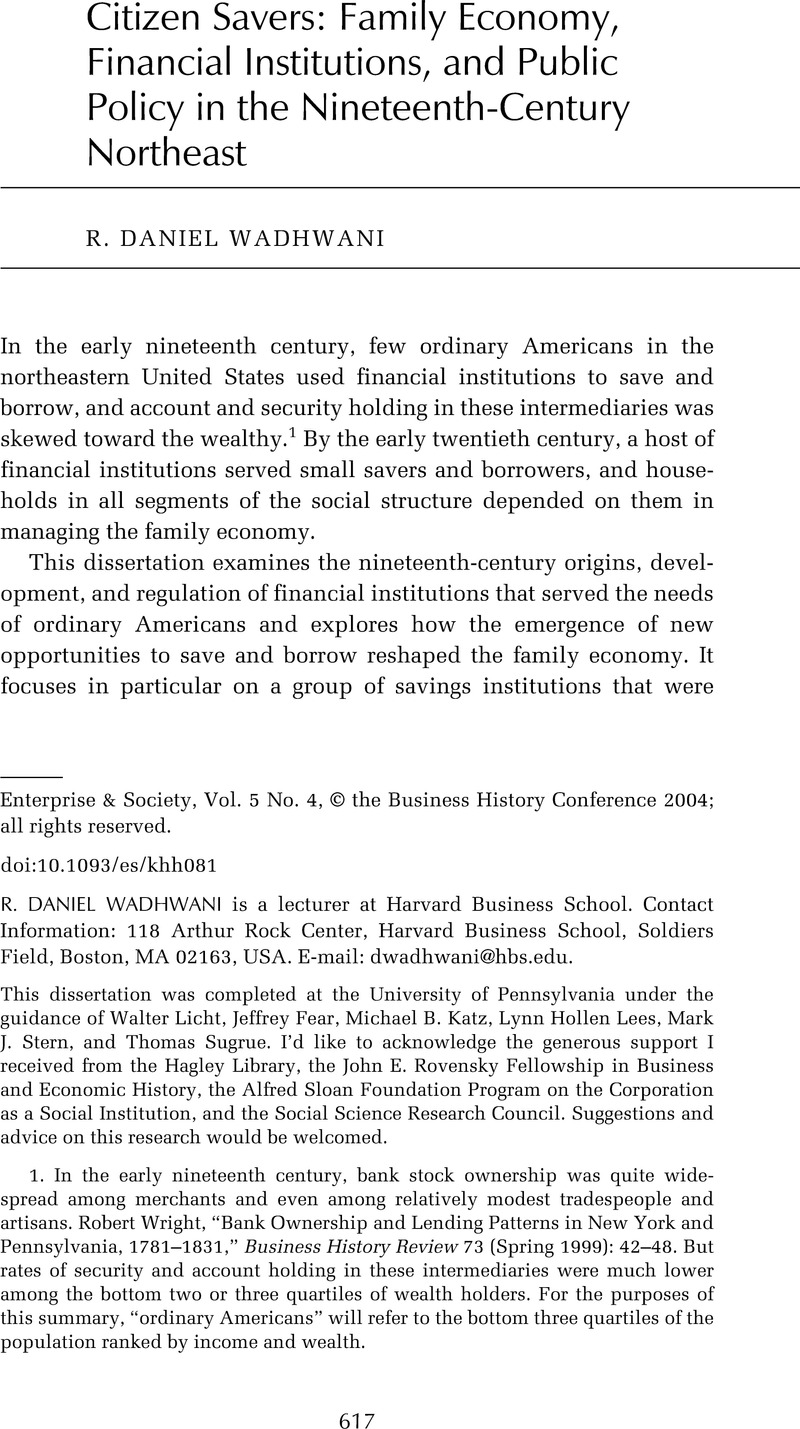Published online by Cambridge University Press: 18 February 2015

1. In the early nineteenth century, bank stock ownership was quite widespread among merchants and even among relatively modest tradespeople and artisans. Wright, Robert, “Bank Ownership and Lending Patterns in New York and Pennsylvania, 1781-1831,” Business History Review 73 (Spring 1999): 42–48.Google Scholar But rates of security and account holding in these intermediaries were much lower among the bottom two or three quartiles of wealth holders. For the purposes of this summary, “ordinary Americans” will refer to the bottom three quartiles of the population ranked by income and wealth.
2. A number of important studies of specific savings institutions have been completed. Examples include Davis, Lance and Payne, Peter, The Savings Bank of Baltimore, 1818-1866: A Historical and Analytical Study (Baltimore, Md., 1956)Google Scholar; Olmstead, Alan, New York City Mutual Savings Banks, 1819-1861 (Chapel Hill, N.C., 1976)Google Scholar; Mason, David, “From Building and Loans to Bail-Outs: A History of the American Savings and Loan Industry, 1831-1989” (Ph.D. diss., Ohio State University, 2001).Google Scholar
3. Savings institutions primarily invested in mortgage loans and public debt, though significant regional differences existed. The important role of savings institutions in financing infrastructure development, however, suggests that they did in fact play an important role in the expansion of markets. See, for instance, Olmstead, Alan, “Investment Constraints and New York City Mutual Savings Bank Financing of Antebellum Development,” Journal of Economic History 32 (Dec. 1972), 287–311.CrossRefGoogle Scholar This dissertation, however, focuses on the savings institutions’ contribution to the development of household capacity to manage risk and opportunity.
4. Katz, Michael et al., eds., Social Organization of Early Industrial Capitalism (Cambridge, Mass., 1982).CrossRefGoogle Scholar
5. One social history that does briefly examine the role of savings banks as part of the development of household strategy in the industrial era is Thernstrom, Stephan, Poverty and Progress (Cambridge, Mass., 1964), 122-31.Google Scholar A more recent study is Alter, George, Goldin, Claudia, and Rotella, Elyce, “The Savings of Ordinary Americans: The Philadelphia Saving Fund Society in the Mid-Nineteenth Century,” Journal of Economic History 54 (Dec. 1994): 735-67.CrossRefGoogle Scholar
6. Malthus, Thomas, An Essay on the Principle of Population (London, 1826), 407–408.Google Scholar
7. Walker, Francis Amasa, The Wages Question (New York, 1876), 414.Google Scholar
8. The methods and sources used in this chapter draw heavily upon the approach developed by Alter, Goldin, and Rotella, , “The Savings of Ordinary Americans.”Google Scholar